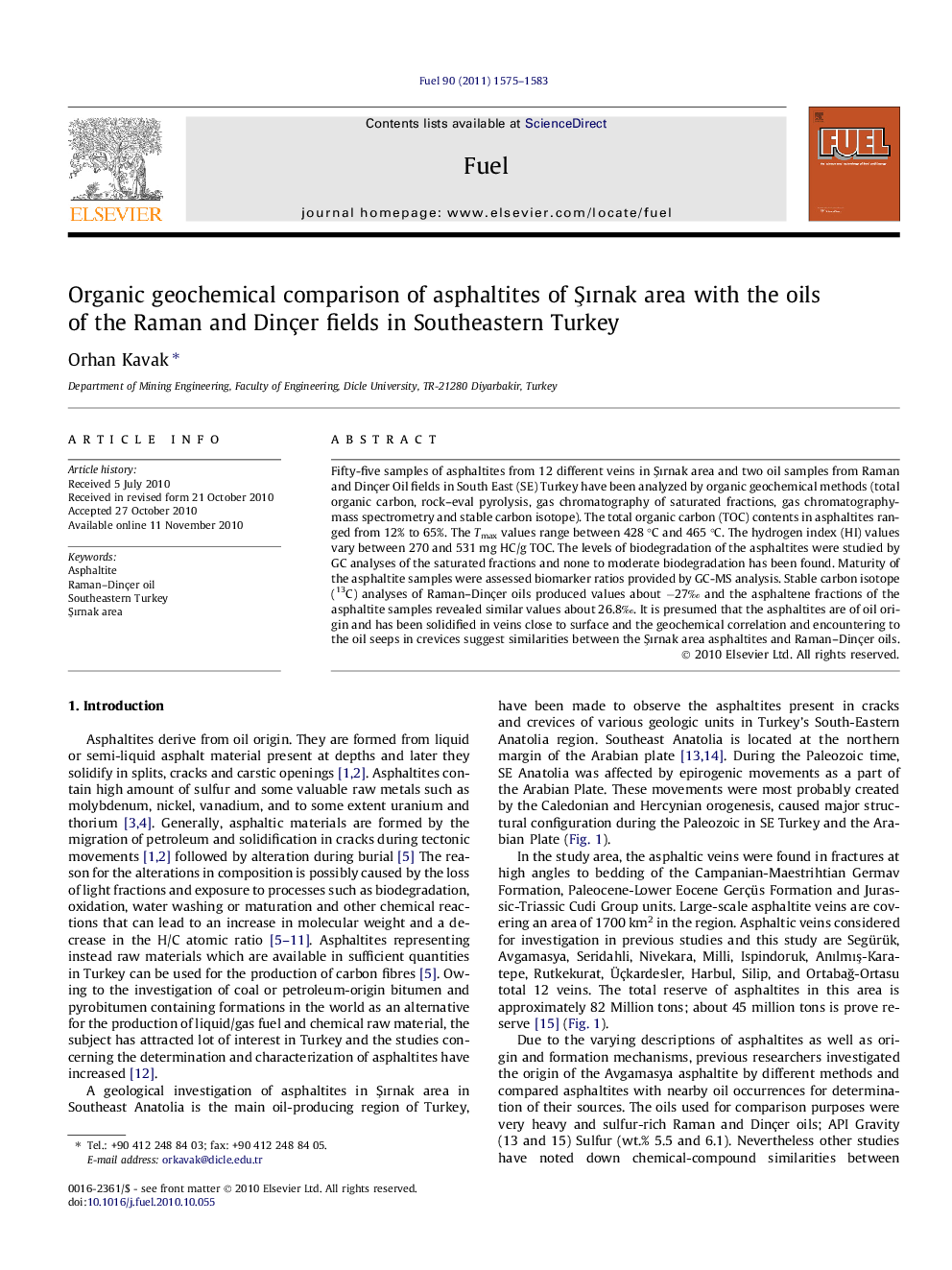| Article ID | Journal | Published Year | Pages | File Type |
|---|---|---|---|---|
| 10273041 | Fuel | 2011 | 9 Pages |
Abstract
Fifty-five samples of asphaltites from 12 different veins in Åırnak area and two oil samples from Raman and Dinçer Oil fields in South East (SE) Turkey have been analyzed by organic geochemical methods (total organic carbon, rock-eval pyrolysis, gas chromatography of saturated fractions, gas chromatography-mass spectrometry and stable carbon isotope). The total organic carbon (TOC) contents in asphaltites ranged from 12% to 65%. The Tmax values range between 428 °C and 465 °C. The hydrogen index (HI) values vary between 270 and 531 mg HC/g TOC. The levels of biodegradation of the asphaltites were studied by GC analyses of the saturated fractions and none to moderate biodegradation has been found. Maturity of the asphaltite samples were assessed biomarker ratios provided by GC-MS analysis. Stable carbon isotope (13C) analyses of Raman-Dinçer oils produced values about â27â° and the asphaltene fractions of the asphaltite samples revealed similar values about 26.8â°. It is presumed that the asphaltites are of oil origin and has been solidified in veins close to surface and the geochemical correlation and encountering to the oil seeps in crevices suggest similarities between the Åırnak area asphaltites and Raman-Dinçer oils.
Keywords
Related Topics
Physical Sciences and Engineering
Chemical Engineering
Chemical Engineering (General)
Authors
Orhan Kavak,
